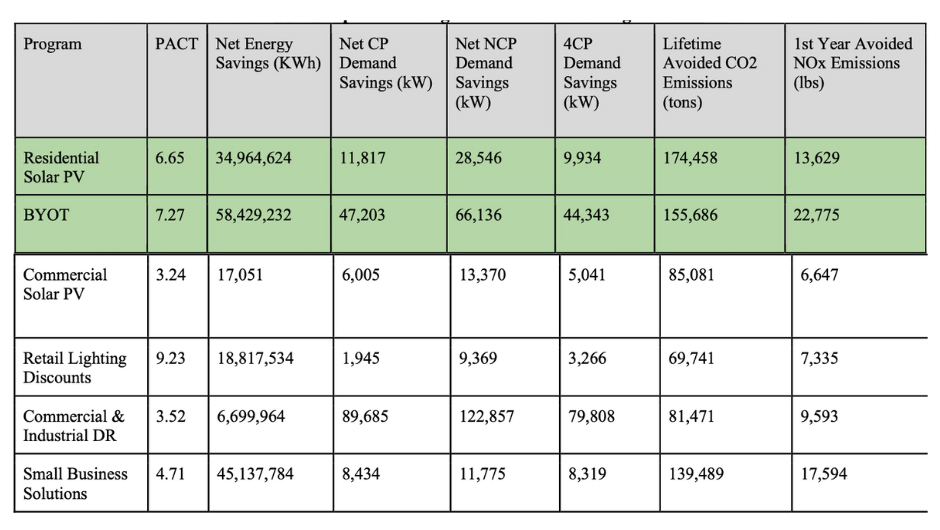Public Citizen’s Recommended Enhancements to CPS Energy’s STEP Program
Public Citizen’s Recommended Enhancements to CPS Energy’s STEP Program
To: CPS Energy Board of Trustees Rudy Garza, President and CEO
Recommendations for CPS Energy’s STEP Program from Public Citizen
CPS Energy, like other utilities in Texas, is facing the challenge of providing reliable and affordable power to customers, while also recognizing its significant role in the ERCOT market. It’s also imperative that CPS Energy decarbonize its power supply as the need to rapidly reduce our dependence on fossil fuel power is critical to limit global warming.
The state’s response to increasing demand and to prevent potential blackouts has been to fund the buildout of more fossil fuel gas plants. However, there are other cost-effective ways to meet the demand, like CPS Energy’s STEP program.
Based on the Evaluation, Measurement, and Verification of CPS Energy’s FY 2024 DSM Portfolio by Frontier Energy, Public Citizen is making two recommendations for enhancing the STEP program that will not only benefit the utility but customers as well.
Public Citizen’s recommendations:
- Reinstate the Residential Solar PV rebate. Rebates should be offered to all customers, with an added rebate amount for low-to-moderate-income customers (80% of MFI or below).
- Increase and enhance the incentive to the Bring Your Own Thermostat (BYOT) program. Customers should receive a bill credit for each demand response event they fully participate in.
The recommendations for these two programs are based on their significant contribution to demand reduction, energy savings, cost effectiveness, and emission reductions.
Key Program Metrics for Residential Rooftop Solar PV & Bring Your Own Thermostat Programs, Compared to Other Top Performing or Related STEP Programs

The BYOT program (PACT 7.27) and Residential Solar PV program (PACT 6.65) were the second and third most cost-effective programs in CPS Energy’s STEP portfolio, following only the Retail Lighting Discounts (PACT 9.23).
The BYOT program delivered the highest energy savings of all STEP programs (58,429,232 kWh) and the second greatest reduction in ERCOT 4CP peak demand (44,343 kW).
The Residential Solar PV program yielded the greatest greenhouse gas emissions reductions of any program (174,458 tons) and the BYOT program yielded the second highest GHG reduction (155,686 tons). The BYOT program yielded the greatest 1st Year NOx emissions reductions of any program (22,775 lbs).
While most of the other STEP programs were also cost effective and yielded energy, demand and emissions benefits, only the most cost effective and beneficial programs are highlighted here. I encourage you to read the complete report if you haven’t already and to see pages 158 – 163 for the complete summary tables.
The Program Administrator Cost Test (PACT) is a cost-effectiveness test that examines the costs and benefits of each program from the perspective of the entity implementing the program (CPS Energy). The benefits considered from the utility perspective are the savings derived from not needing to procure and deliver the energy to customers. A PACT ratio greater than 1.0 indicates that the program delivered more benefits than costs incurred from the utility’s perspective.
While Frontier Energy’s analysis clearly demonstrates that the Residential Solar PV program was very valuable to the utility, this analysis only considers a portion of the value distributed solar provides. A recent more thorough analysis of the value of distributed solar in ERCOT by Dunsky1 shows that each kWh produced yields at least $0.27 in benefits – $0.15 in avoided energy and grid costs and $0.12 in environmental benefits. Because distributed solar is produced at the same location as energy is used and much of it is produced during high demand for electricity, it is significantly more valuable than the average energy generated for the grid. Benefits analyzed in the Dunsky study include:
- Avoided energy costs
- Avoided transmission and distribution costs
- Avoided ancillary services costs
- Reduced GHG pollution
- Reduced air pollution
DeeDee Belmares
Clean Energy Advocate
Public Citizen
1 https://txses.org/wp-content/uploads/2024/07/Value-of-Residential-Solar-in-Texas.pdf